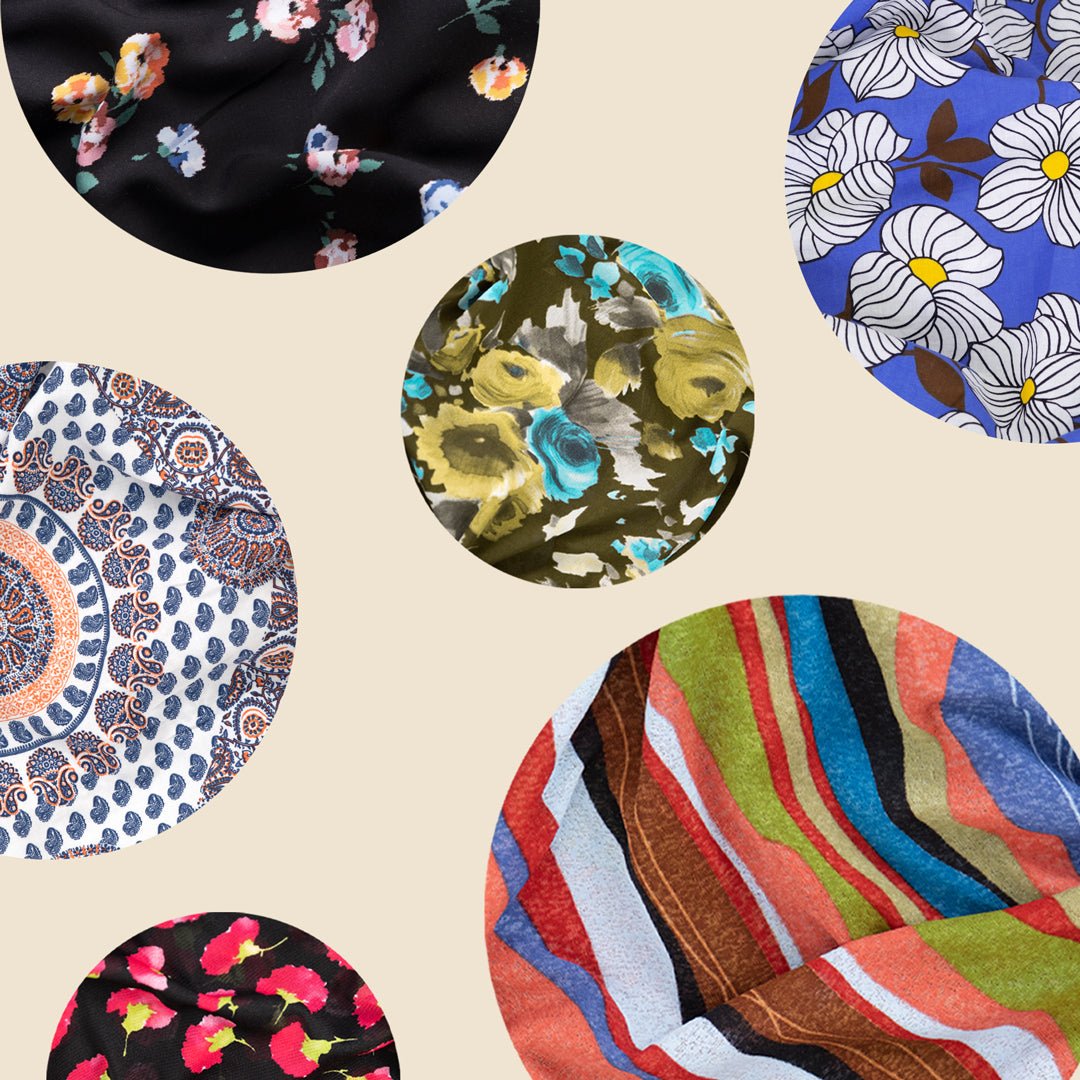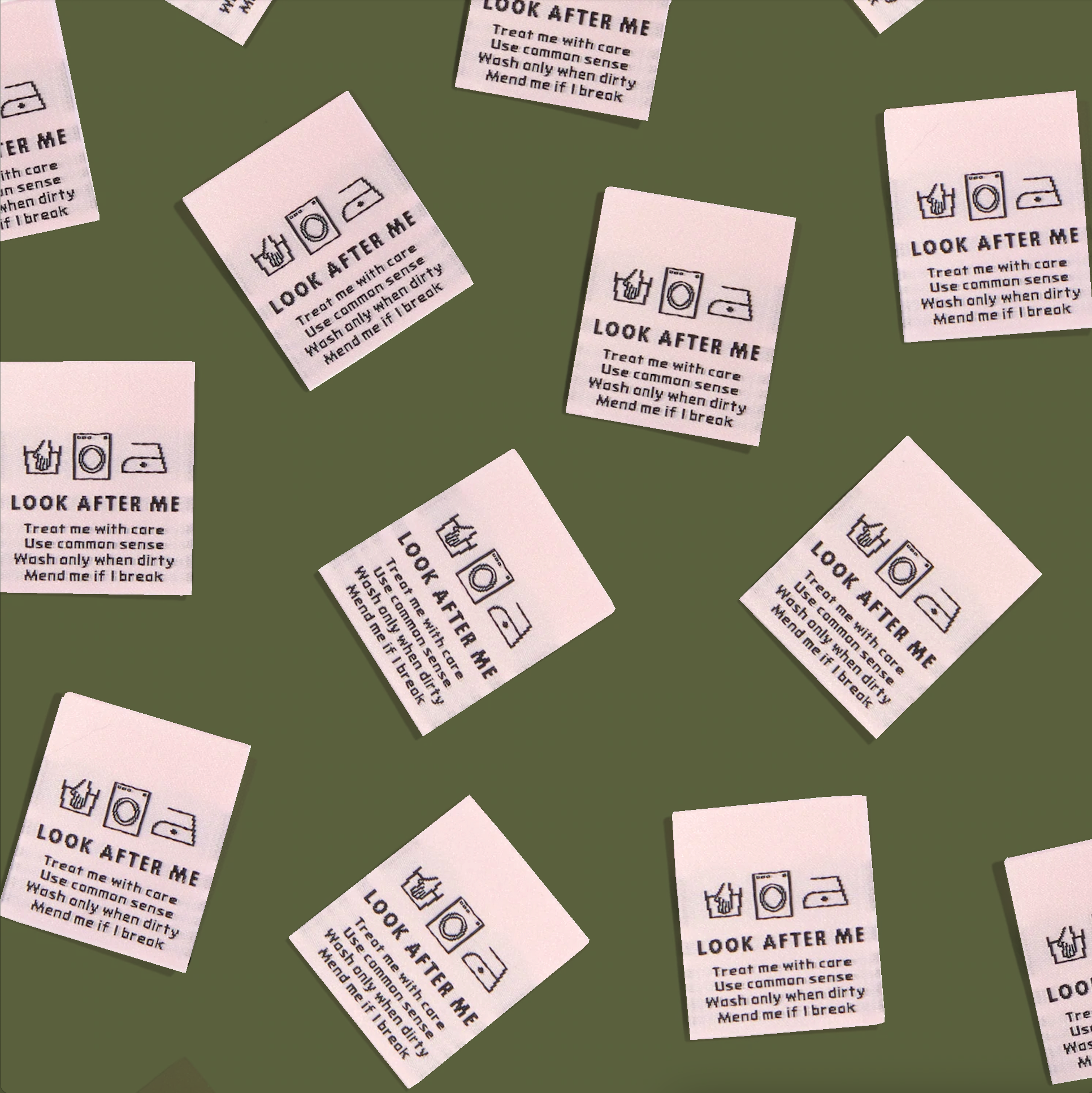
Deadstock Fabrics: What They Are & Why We Carry Them
As members of the fashion industry, we have a responsibility to be as transparent as possible about the sustainability of our business and our fabrics. The mainstream fashion industry is responsible for over 10% of humanity’s carbon emissions—making it one of the leading culprits in the world. Now more than ever, retailers need to speak honestly and openly about the exploitative practices embedded in the fashion cycle, and work together to find and implement supplementary solutions.
One of the many obstacles fashion sustainability efforts are up against is the volume of waste created throughout the textile manufacturing supply chain. A market for deadstock fabrics, mobilized by jobbers, is one way retailers have responded to this issue.

Deadstock has since prompted many questions regarding its “true” sustainability—from consumers and retailers alike. As a retailer of deadstock fabrics, it is our belief that providing these fabrics to our customers has a positive impact on both the environmental and social sustainability of our business overall, as well as our role in the textile manufacturing industry as a whole.
We do not believe deadstock is perfect—far from it, in fact—but it’s an avenue which allows us to cut-back on virgin material extraction whilst providing lower price-point items to our customers; affording greater access to the practice of making and mending one's own garments. As these are two of our highest valued pursuits, deadstock is something we are proud to provide as much as we can, and are eager to speak honestly and openly about in these important conversations.

First of All, What is Deadstock?
Essentially, deadstock is leftovers—surplus from a fashion brand or textile mill’s production process due to overproduction, quality issues, or small flaws.

What is a Jobber?
Answer: the middle person. They’re people who buy deadstock in bulk from textile mills and designers to sell to fabric retailers and small fashion brands at a wholesale price.

Where Do We Stand?
Although it’s not the case that deadstock fabrics are heroically saved from the landfill or incinerator when they’re extracted from mills, they are still underutilized textiles. This means that they’re likely to collect dust on warehouse shelves, potentially for many years, simply taking up space and serving no real purpose.
By providing these fabrics to our community of at-home sewists, we set them up to be sentimentally cherished and cared for to their fullest potential, while offsetting the need to produce more virgin goods.
The deadstock market is often accused of allowing “eco-friendly” retailers to sell unethically produced fibers without compromising their green check-marks, but the reality is that making use of already-produced polyester is more sustainable than creating new anything—no matter how organically and ethically produced.
That being said, supporting the exploration and development of sustainable resource production is truly vital to the long-term sustainability of the fashion industry. As well, fashion retailers have a responsibility not to (green)wash over fiber-content information, or lack thereof, in marketing copy for the sake of leveraging SEO and profit over transparency.
It is precisely this romanticization which has led to a rise in consumer appeal and demand for textile “waste”, prompting many to ask whether or not textile mills are now encouraged to overproduce, since they know their surplus will (likely) not be left unsold. Based on our understanding of the industry, we do not believe this to be the case, as surplus is typically sold off at or below cost, rather than for a profit. That being said, there is still room for debate on this conversation.

Our Takeaways
Although we do not claim to be perfectly sustainable, we are passionately driven to optimize the sustainability of our business and fabrics as much as possible. As a distributor of high-quality garment textiles, this means that the more we can forgo virgin material extraction in place of using textiles that already exist, the better. Sourcing deadstock fabrics helps us to deliver on this goal.
Blackbird Fabrics is proudly committed to inspiring at-home sewists to make, mend and properly care for their own clothes so that they are cherished as long as possible. We are likewise committed to making at-home sewing as accessible as possible, creating a culture of care and community from which our environmental efforts can flourish.
Still Want To Learn More?
Check out this article on "What is Deadstock Fabric and is it Sustainable?" by Good on You
Shop our Deadstock fabrics here
Learn more about our Fabrics down below!
How to Care For Your Me-Mades and Make Them Last
Deciphering Bottomweights
Behind the Scenes of our Handwoven Cotton
Get to Know Our Linen Family





Leave a comment
This site is protected by hCaptcha and the hCaptcha Privacy Policy and Terms of Service apply.